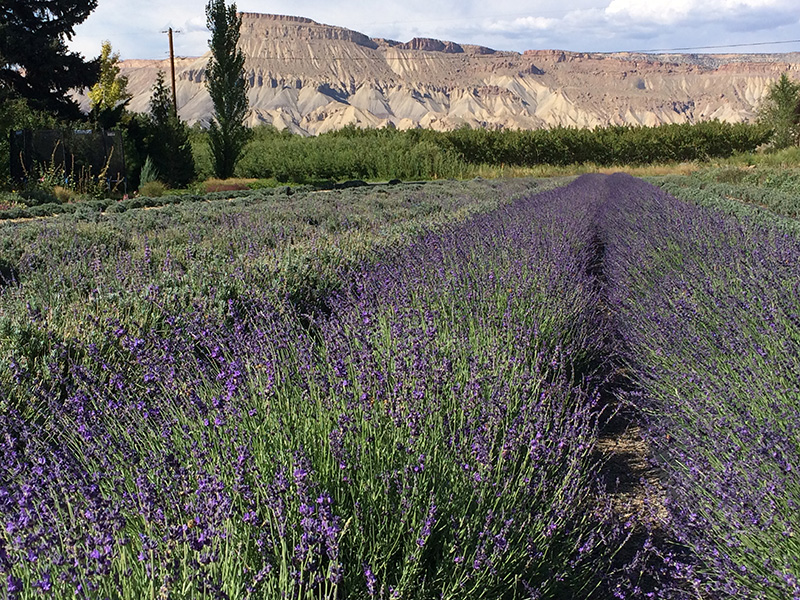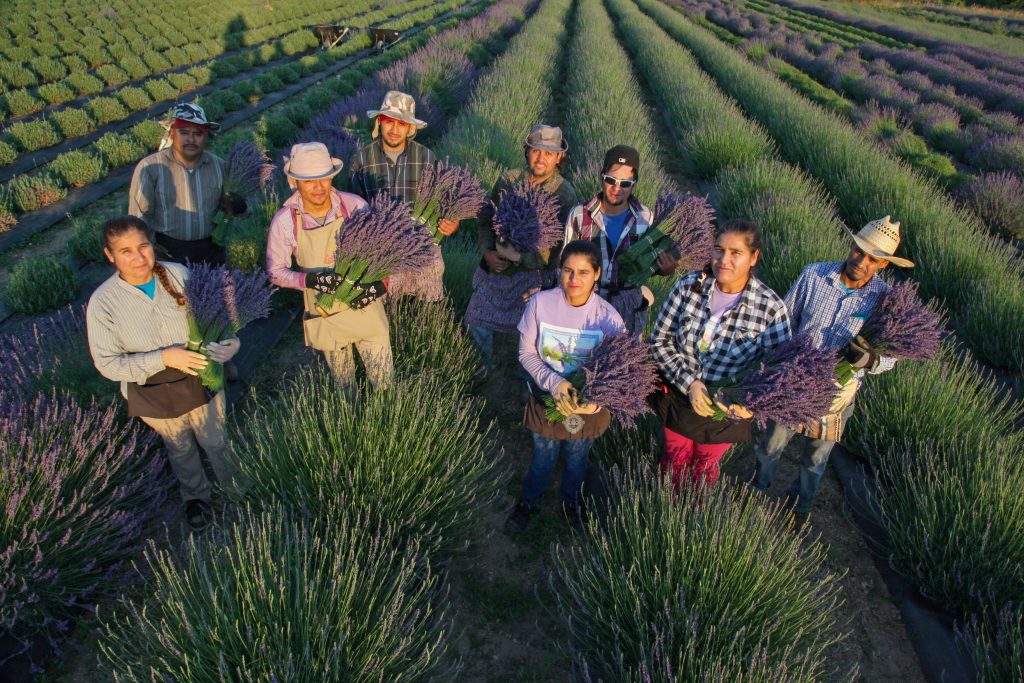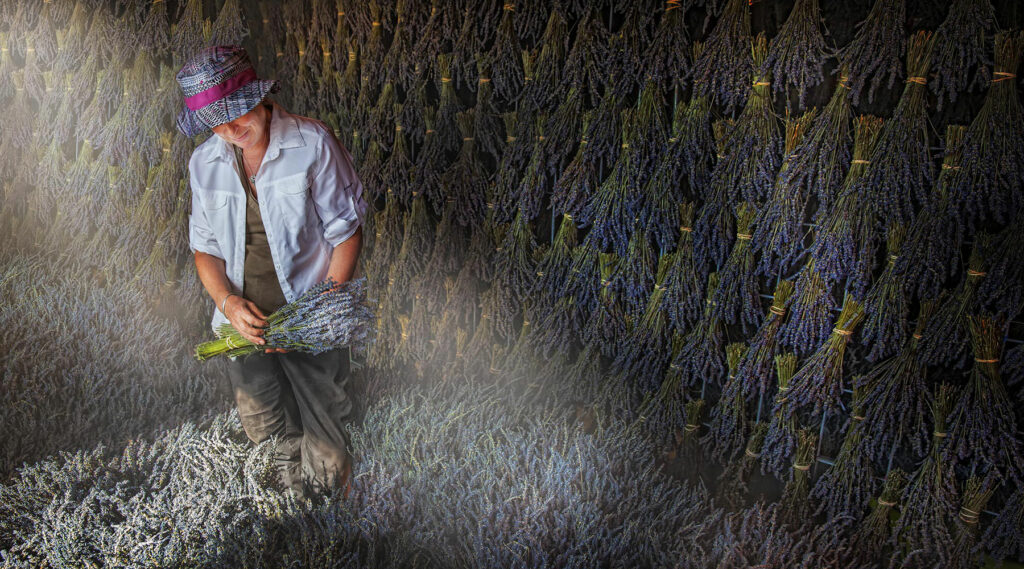Farming is such a rhythmic practice. We are continuously observing present conditions, learning from past successes and mistakes, and looking ahead at seasons to come.
Planting lavender in spring begins in the fall. It begins with planning.
As you get ready to order lavender for spring planting, here are a few things you need to know.
1. First, understand nomenclature.
All lavenders come from the genus Lavandula. This genus will be listed first in a botanical name and capitalized or abbreviated by “L.“.
The species name, which always follows the genus, identifies a specific genus. The species remains lower case. For example, the lavender known by the common name “True Lavender” is properly labeled Lavandula angustifolia. Lavandula is the genus; angustifolia is the species.
Typically, a plant’s botanical name includes a third identifier: the cultivar. A cultivar is selected from natural seedling mutations and cultivated by humans to create a distinct cultivated variety. Cultivars are always propagated from vegetative cuttings rather than from the seeds. For example, ‘Royal Velvet’ is a cultivar. The botanical name would read as follows: Lavandula angustifolia ‘Royal Velvet’.
Though some cultivars can occur in nature as plant mutations, most cultivars are developed by plant breeders and are called hybrids. A cultivar comes from a plant mutation and does not produce true-to-seed (which is why cuttings are necessary). A variety is a group of plants within a species, has one or more distinguishing characteristics, and usually produces true-to-seed (i.e. a variety can reproduce itself from seed).
2. Choose lavender cultivars best suited to your climate and needs.
Which lavender types are best for you? The answer depends on where you are, and what you wish to use your lavender for.
From aroma to medicine, craft to culinary delicacy, lavender offers us many gifts. This versatile and lovable – not to mention drought-tolerant – herb has so many uses and characteristics, it’s no wonder we’re obsessed!
There are hundreds of lavender types out there. Here in the high desert, we first narrow our choices by knowing which cultivars thrive in a colder climate.
Lavandula x. intermedia (called ‘lavandin’, a cross between angustifolia & latifolia), Lavandula angustifolia (referred to as ‘Common Lavender’ or ‘True Lavender’), and Lavandula x. chaytorae (a hybrid of L. angustifolia and L. lanata, Wooly lavender) are three species that grow well in the high desert and Rocky Mountains. Within these species, there are certain cultivars that are especially cold-hardy.
For more info on these types of cold-hardy lavender, check out this blog post:
3. What are you planting for?
If you want to grow lavender for distillation, you’ll lay out your field differently than you would if you were planting lavender for U-Pick. You’ll choose different cultivars for growing culinary lavender than you would if you want to grow lavender for dried bundles.
Be clear about the intended purpose of your lavender so you can select the cultivars best suited to your needs.
For a quick overview of which cultivars are most appropriate for different uses, take a look at this Lavender Cultivar Chart.
3. How will you prepare your beds?
Once you know which types of lavender you want to plant, the next step is to determine how many plants you’ll need.
To do that, plan out your planting.
Design with the end in mind, so that whatever your plans are, you’ll be satisfied with your planting for years to come.
There are four main considerations in lavender planting:
Growing requirements, spacing, weed management and irrigation.
In this blog post, we take a deep dive into these four considerations and how you can apply them in order to achieve your goals:
4. Choose your source wisely.
Where you purchase your lavender matters. When you begin with healthy plant starts, you’ll have a higher success rate with your planting. The last thing you want as you’re taking on such a process as planting out a lavender field, is to struggle with weak or under-established plant starts!
Here at Sage Creations Organic Farm, we propagate all our plant starts right here on our farm, using mature mother plants that have already thrived in our high desert climate.
We pay close attention to every plant start, watering by hand and ensuring their roots are well-established before we send them off to their new homes.
Plus, we never treat our plants or plant starts with toxic chemicals. We practice organic farming methods that show in high quality plants.
5. Place your order.
And do it ahead of time! The sooner you order, the more likely it is you’ll be able to receive the selection of cultivars you want, in the quantities you want them.
When you order from us before October 15, you also get to enjoy an Early Bird discount!
6. Receive plant starts in the mail, or pick them up at the farm.
Just because you don’t live near our farm doesn’t mean you have to sacrifice quality! You can choose to receive our organic lavender plugs by mail.
When you do, check out this resource so you know exactly what to do when your plant starts arrive in the mail:
Ready to place your order?
Click here for our 2021 Organic Lavender Order Form!
Order by October 15 to receive your Early Bird discount and get 5% off!




